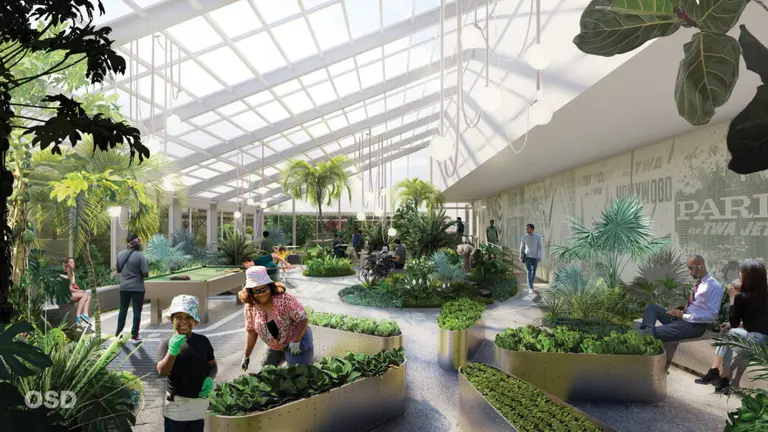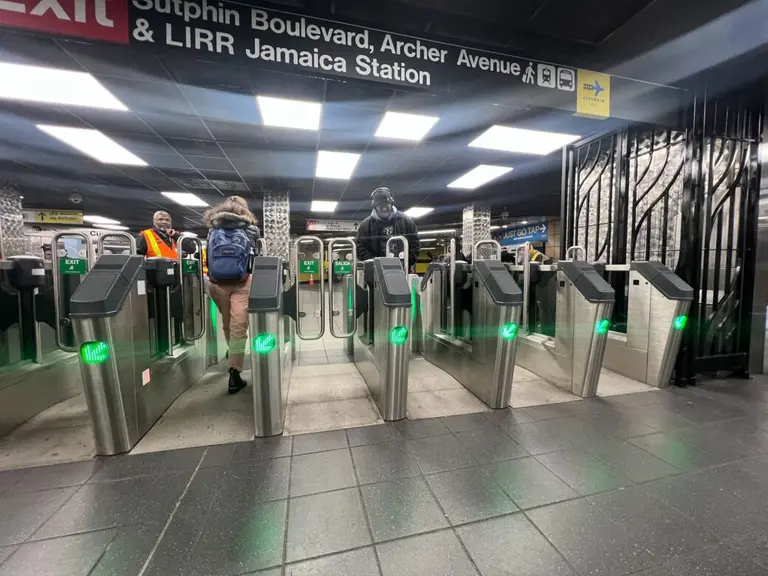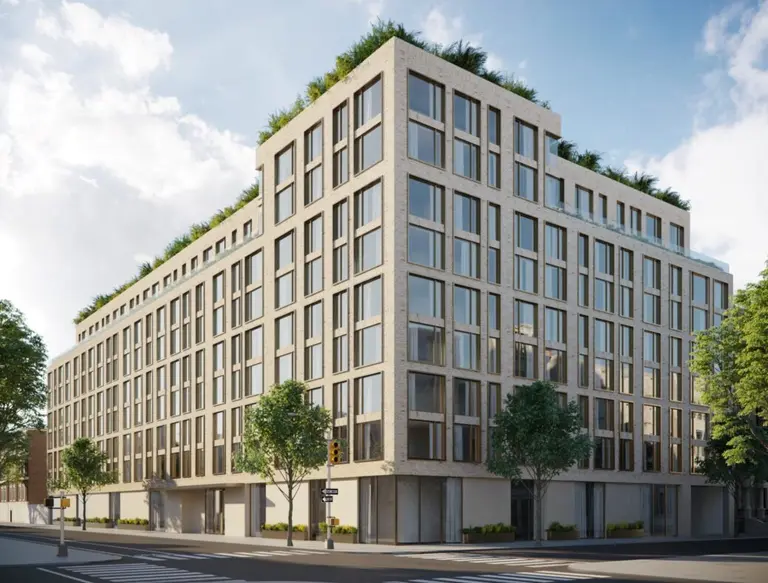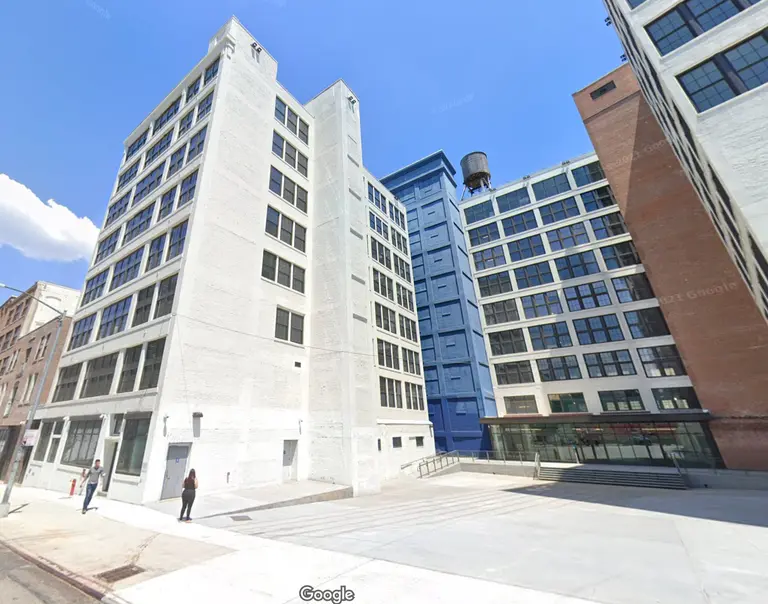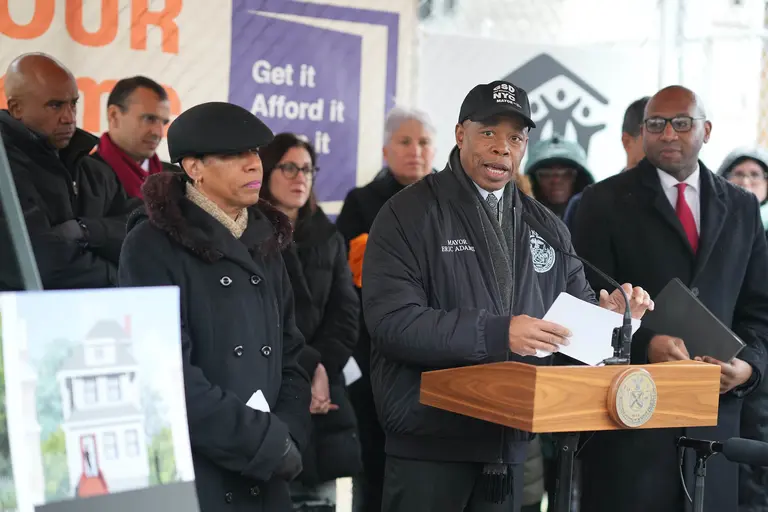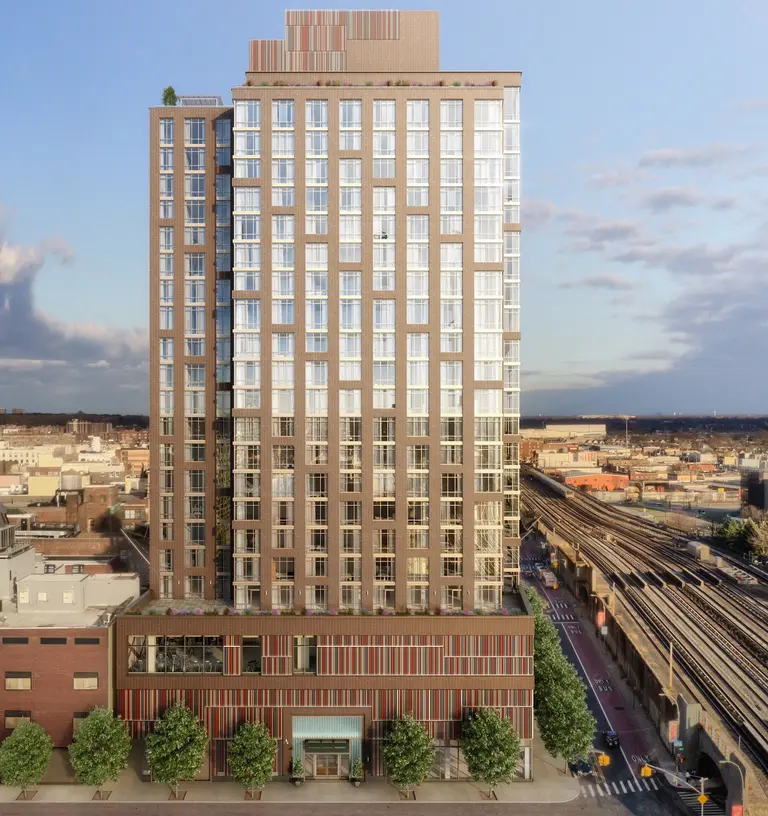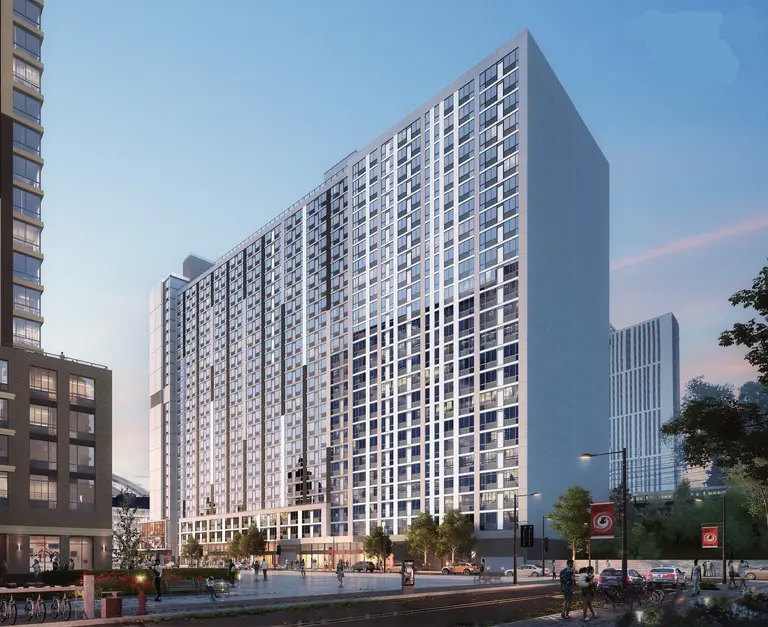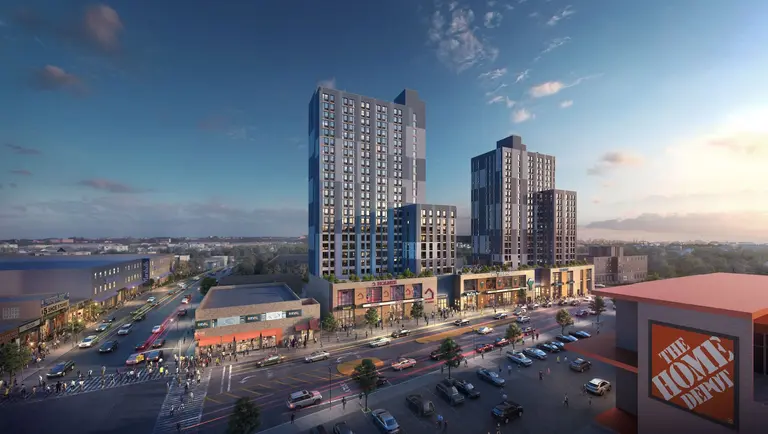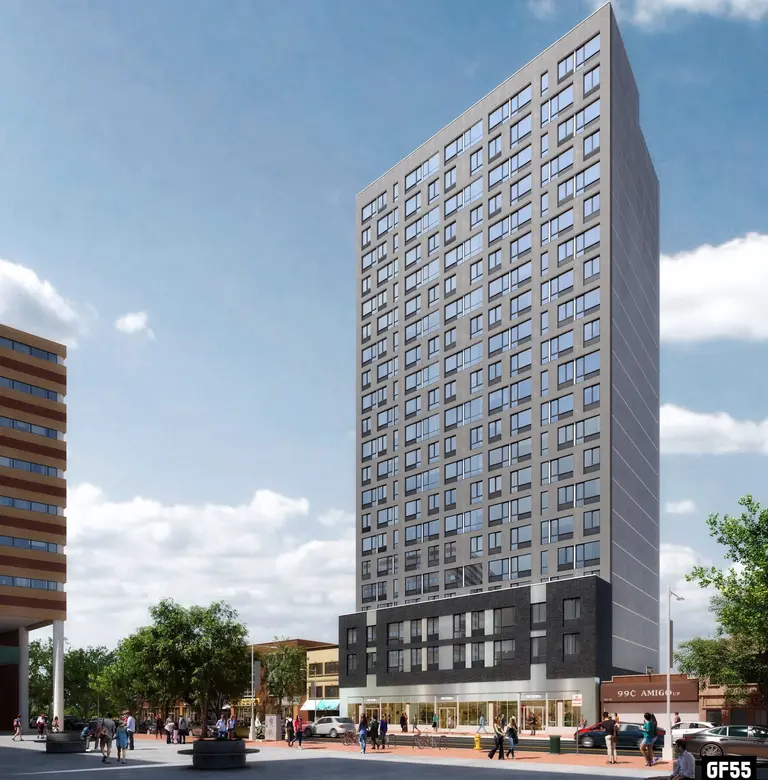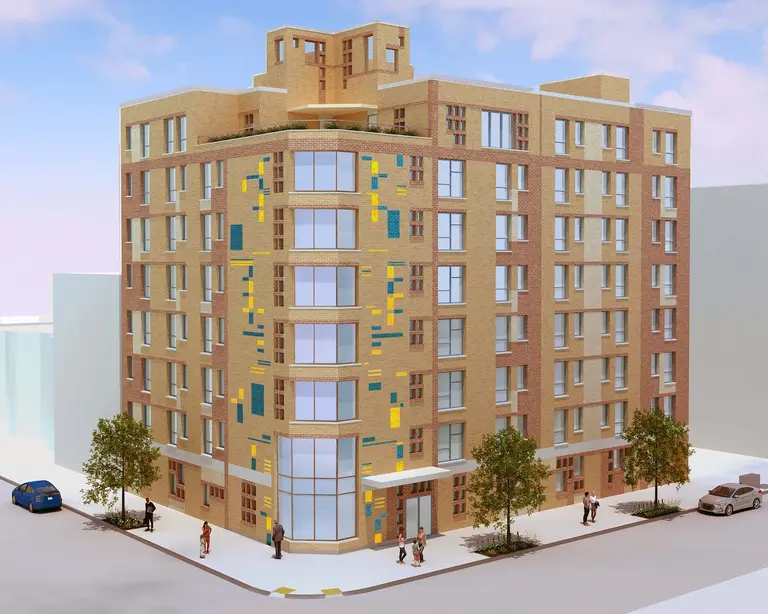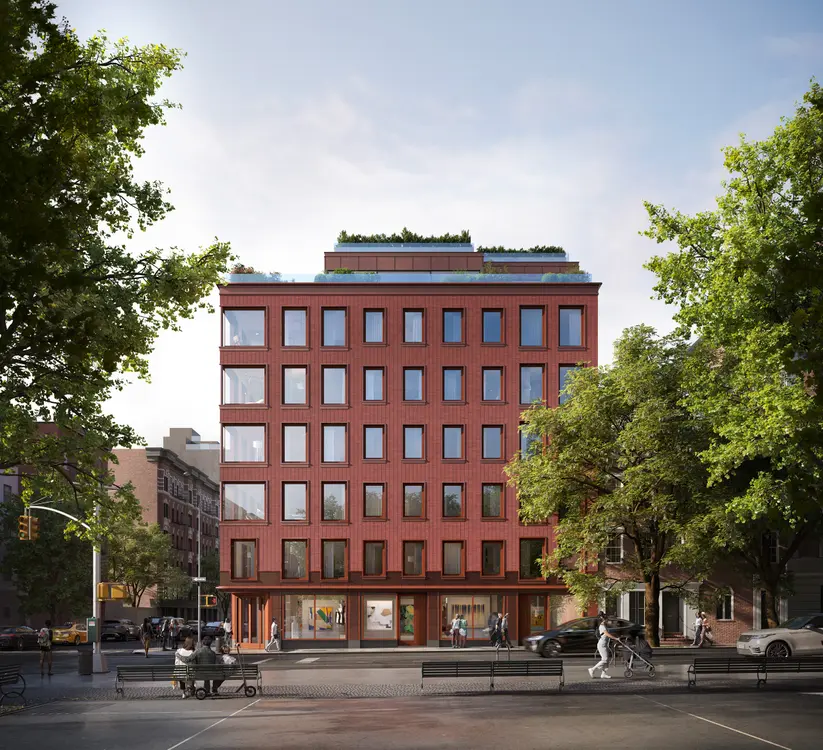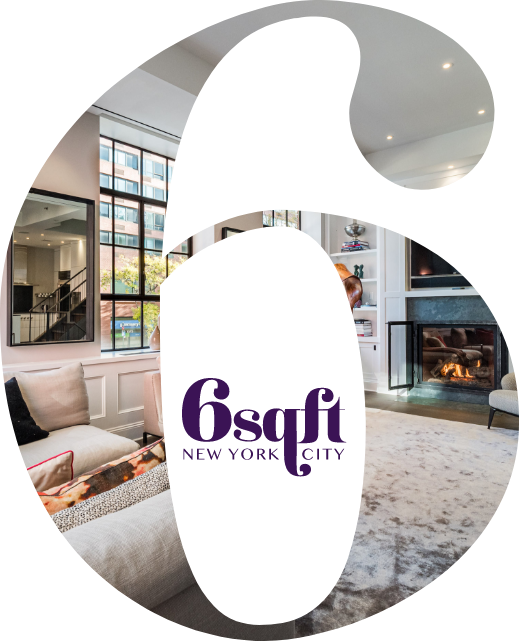NYC’s plan to rezone Jamaica calls for 12,000 new homes
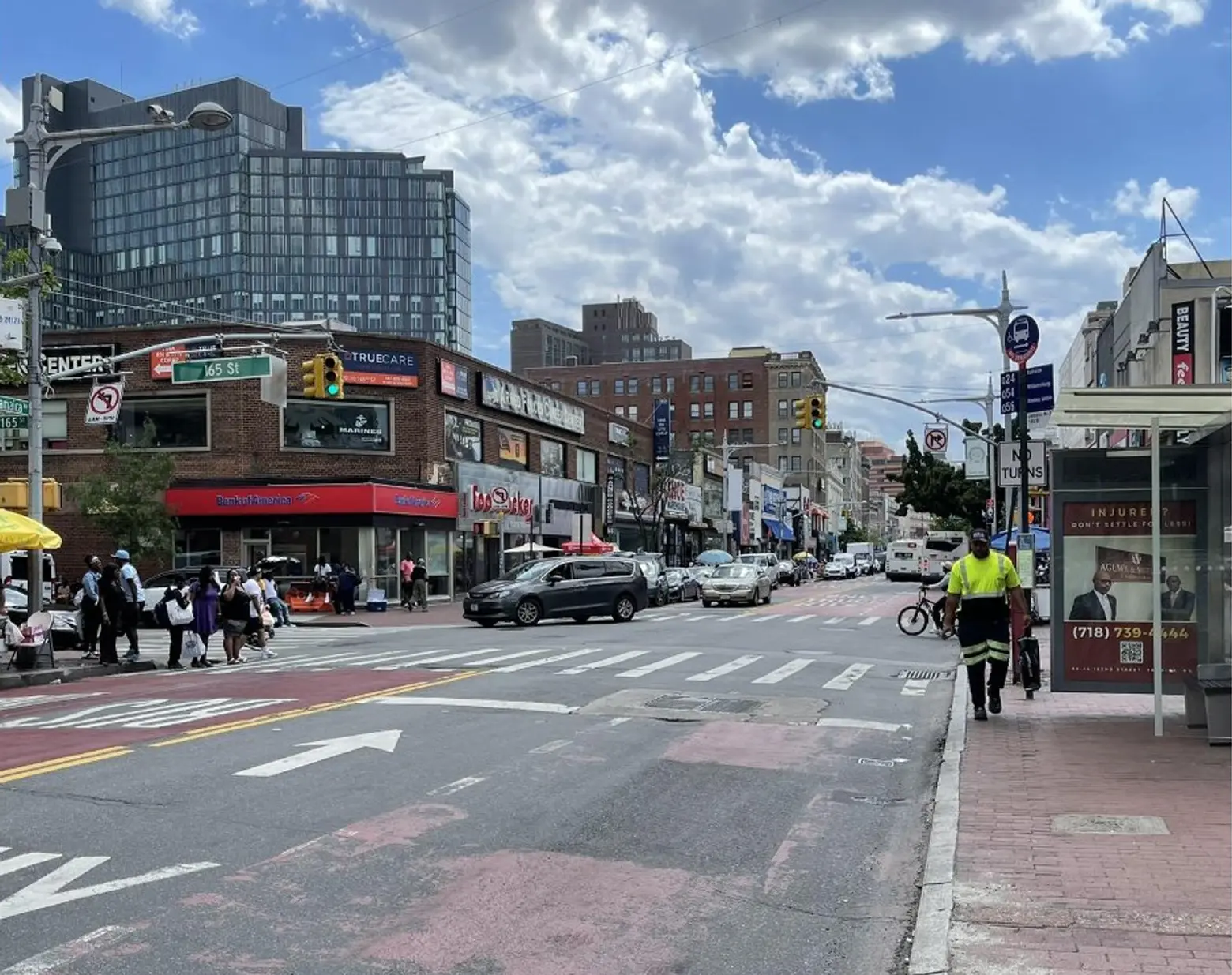
Jamaica Avenue and 165th Street. All images courtesy of DCP
New York City is moving forward with a new rezoning initiative that could bring more than 12,000 new homes to downtown Jamaica, Queens. On Thursday, the Department of City Planning (DCP) began the approval process for the plan, which looks to rezone about 300 blocks in the neighborhood to allow for thousands of new homes, including 4,000 units that would be income-restricted. If approved, the rezoning would create the city’s largest Mandatory Inclusionary Housing area, add two million square feet of commercial space, and generate more than 7,000 new jobs, according to the Queens Eagle.
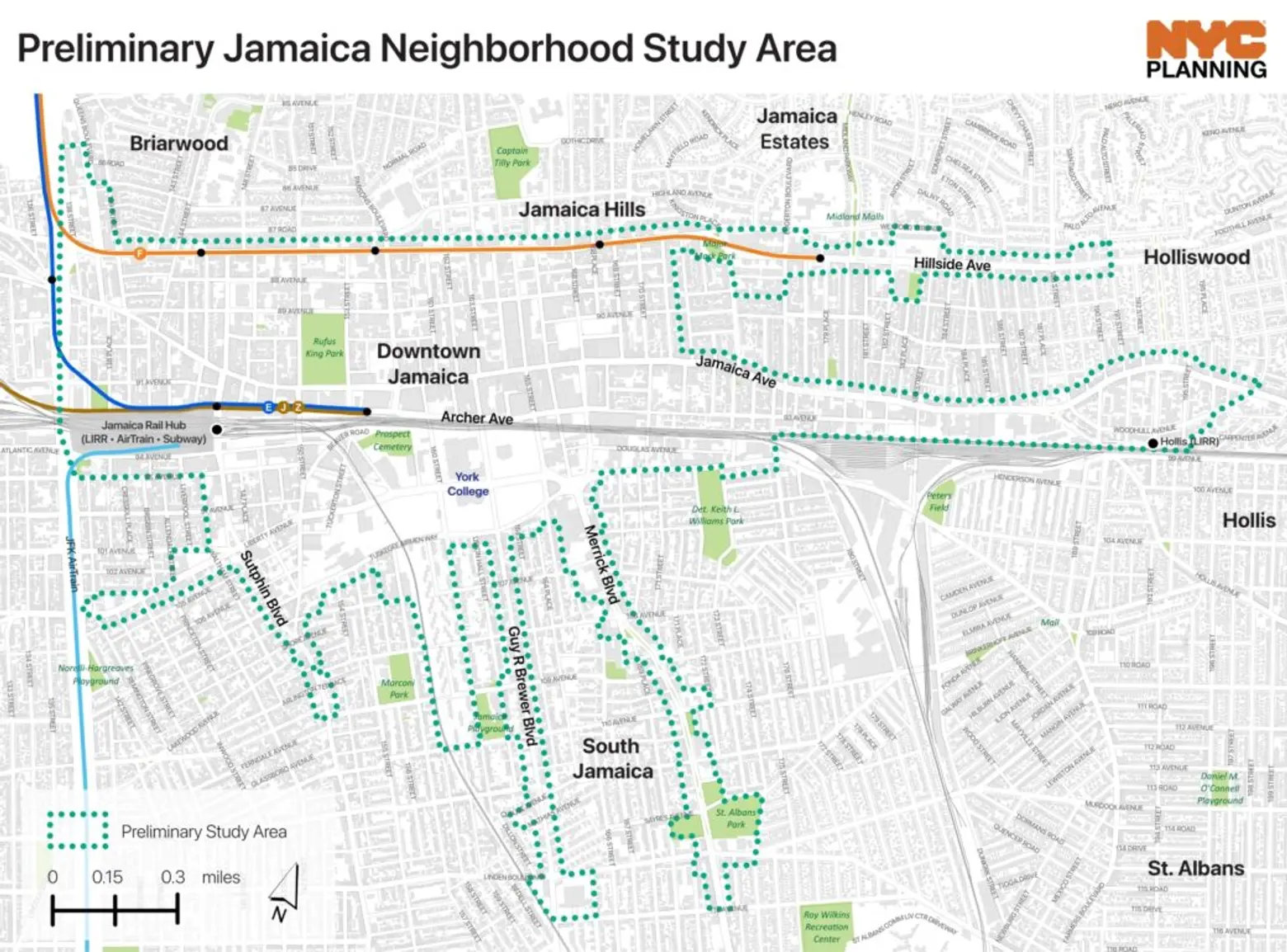
Today, the 300-block area has one- and two-family homes, multi-family residential buildings, commercial, industrial, and community spaces like schools, city and state agency offices, and faith-based organizations. The surrounding areas are primarily occupied by low-rise buildings and one-to-two-family homes.
According to the DCP, the existing zoning does not require affordable housing, limits space for industrial growth, and restricts Jamaica’s potential to thrive as a vibrant place to live, work, and play.
Between 2010 and 2020, the neighborhood’s population grew by 13.4 percent, higher than the rest of the city, which grew by 1.4 percent. Meanwhile, the vacancy rate in Queens sits at 0.88 percent, housing production has increased by only 10 percent, and 57 percent of Jamaica households are rent-burdened.
“Jamaica has been one of the most bustling commercial and transit hubs in the city, but our own outdated zoning and lack of housing and investments have held it back,” DCP Commissioner Dan Garodnick told the Queens Eagle.
“In a city like New York, to have a neighborhood that is geographically central to everything, and 20 minutes from an airport, Downtown Brooklyn and Downtown Manhattan, it should be thriving with lots of job and housing opportunities around it. That is what we hope to deliver here.”
The rezoning plan would lift existing restrictions across the neighborhood, dividing it into five sub-areas: the North Core, Downtown Core, South Core, Southern Corridors, and Industrial Areas.

The North Core, which spans from Hillside Avenue to Jamaica Avenue, currently lacks housing despite being near multiple train lines. Under the proposed rezoning, this area would be opened up for new housing development, as reported by Queens Eagle.
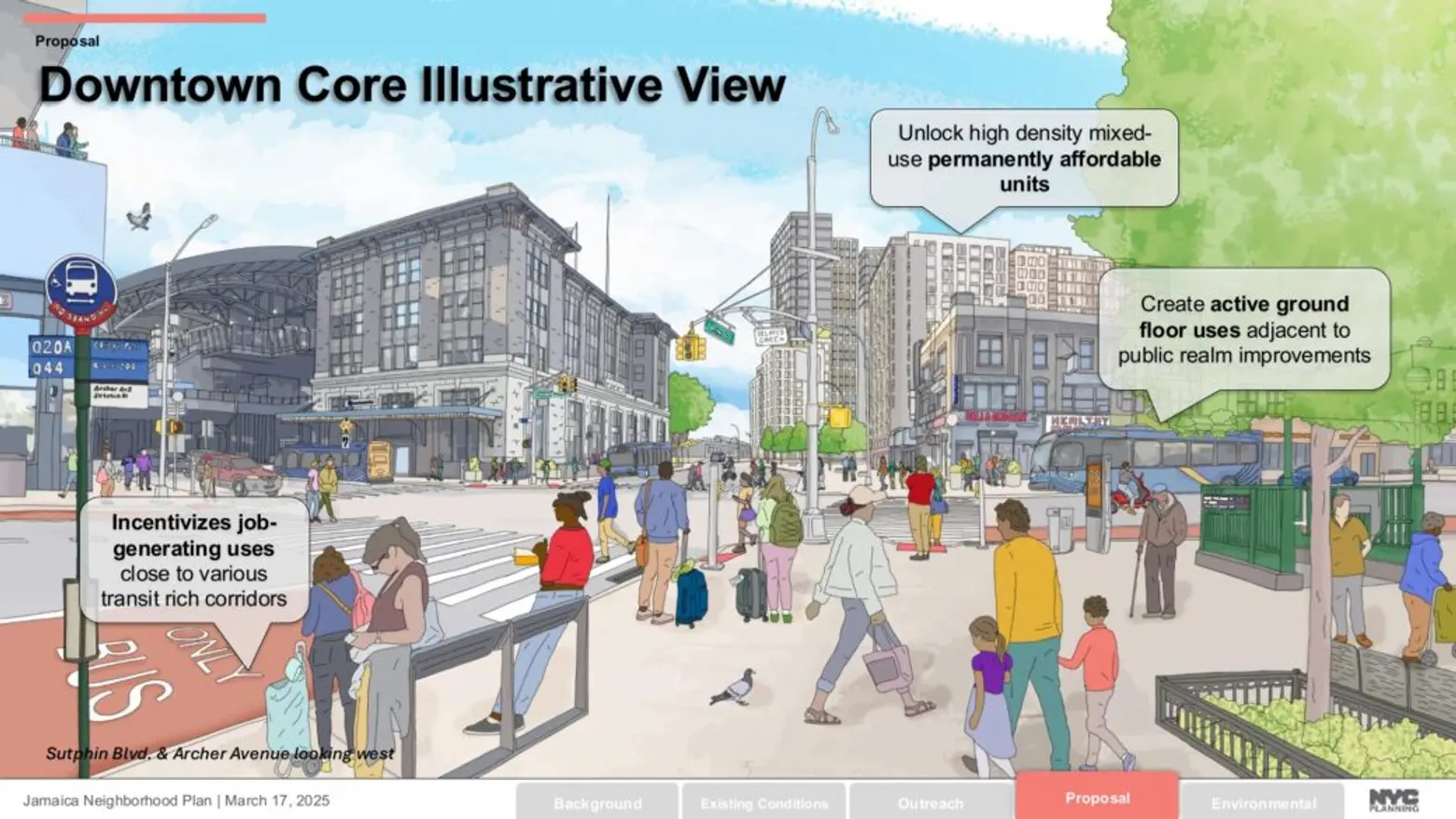
The Downtown Core, running along Jamaica Avenue and Archer Avenue, would be rezoned to allow for buildings as tall as 18 stories and encourage high-density mixed-use developments with permanently affordable housing, active ground floor retail, and community services. Just north, between Jamaica Avenue and Hillside Avenue, densities would slightly decrease.
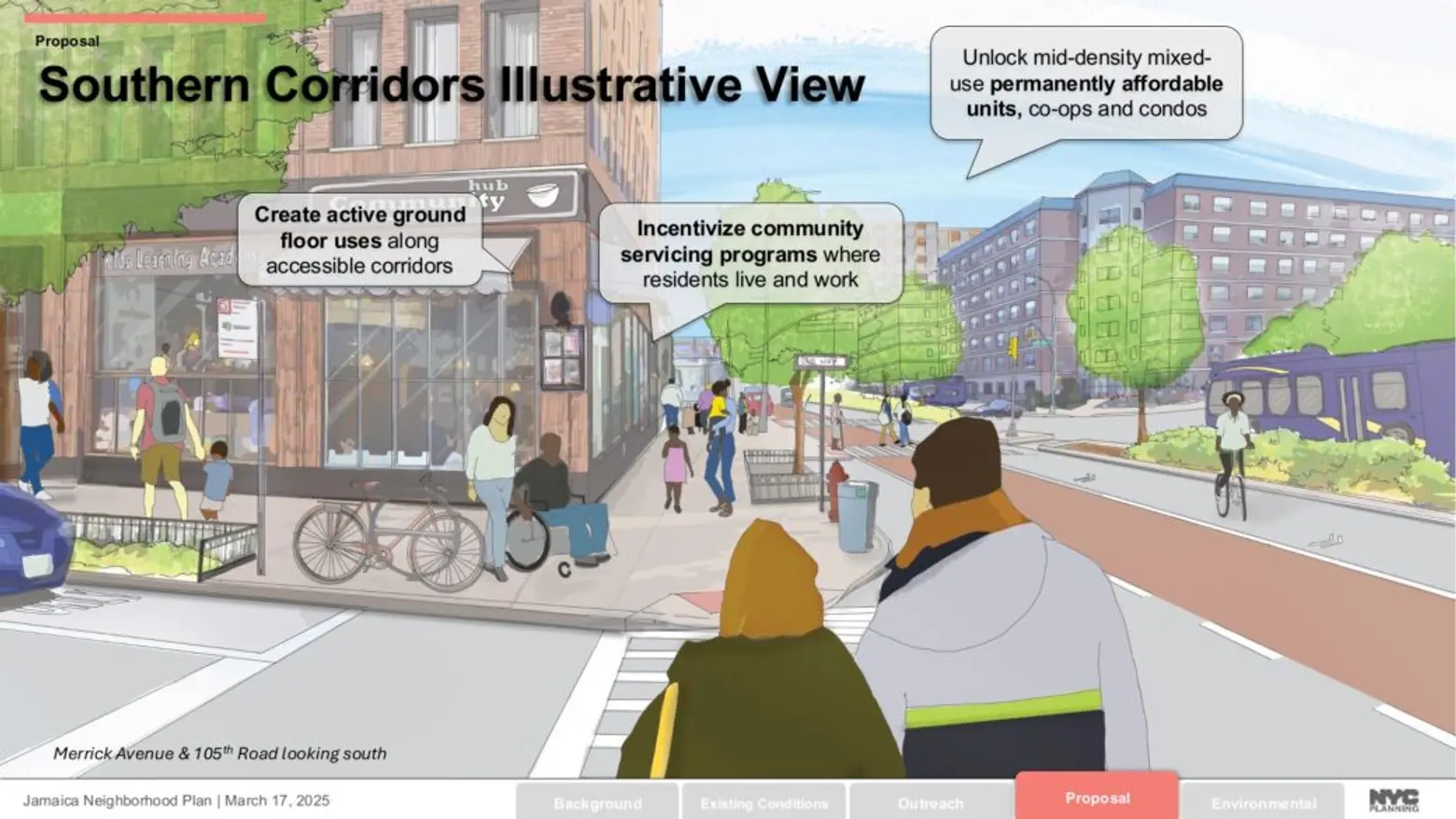
The Southern Corridors, which include major roads like Sutphin Boulevard, Guy R. Brewer Boulevard, and Merrick Boulevard, would be rezoned to allow buildings as tall as 11 stories, up from the current eight-story limit.
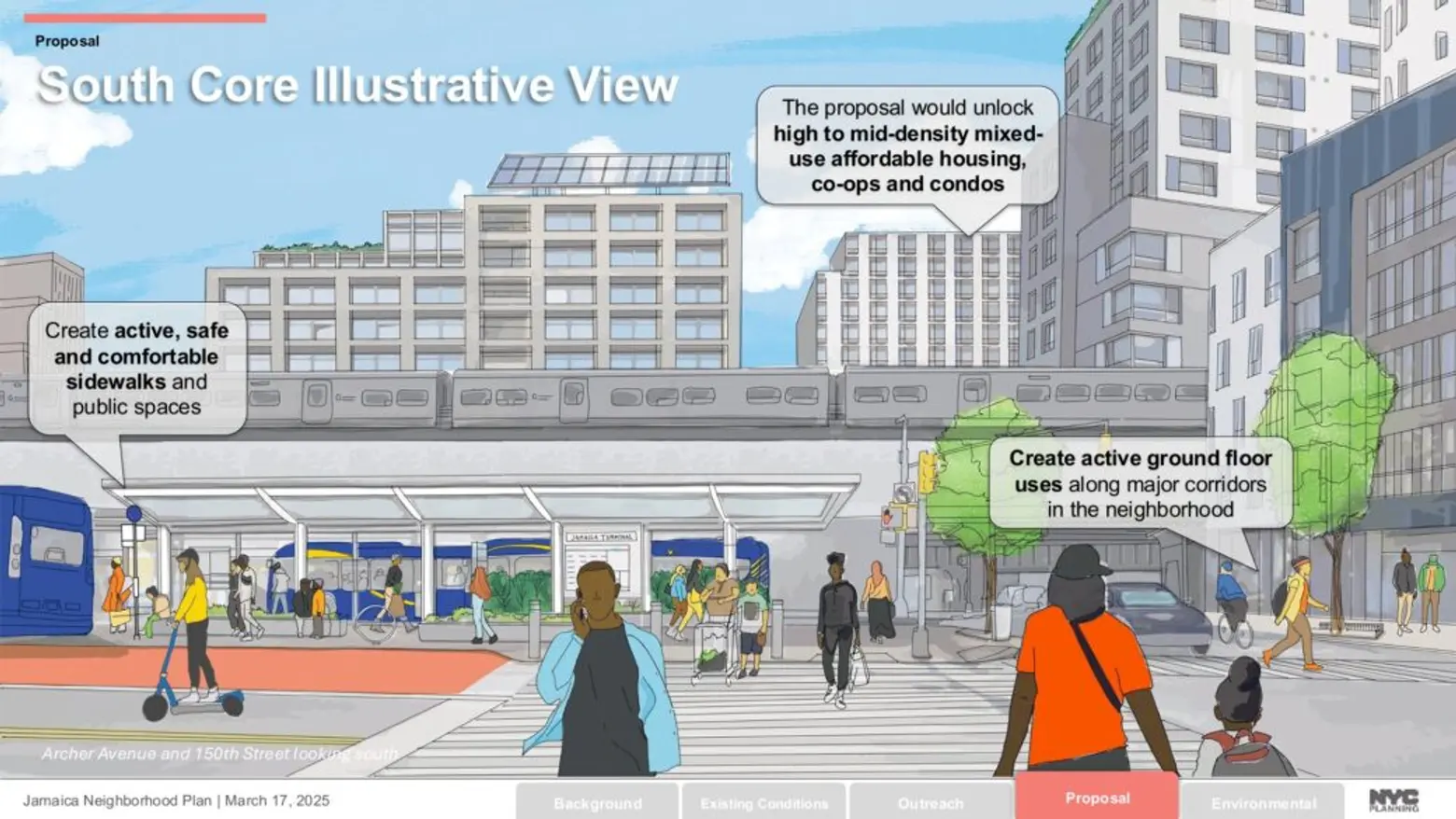
The South Core, located just south of Jamaica Center and the Archer Avenue bus terminal, would see mixed-use zoning that enables the first new homes in over six decades while also encouraging commercial and light manufacturing uses.
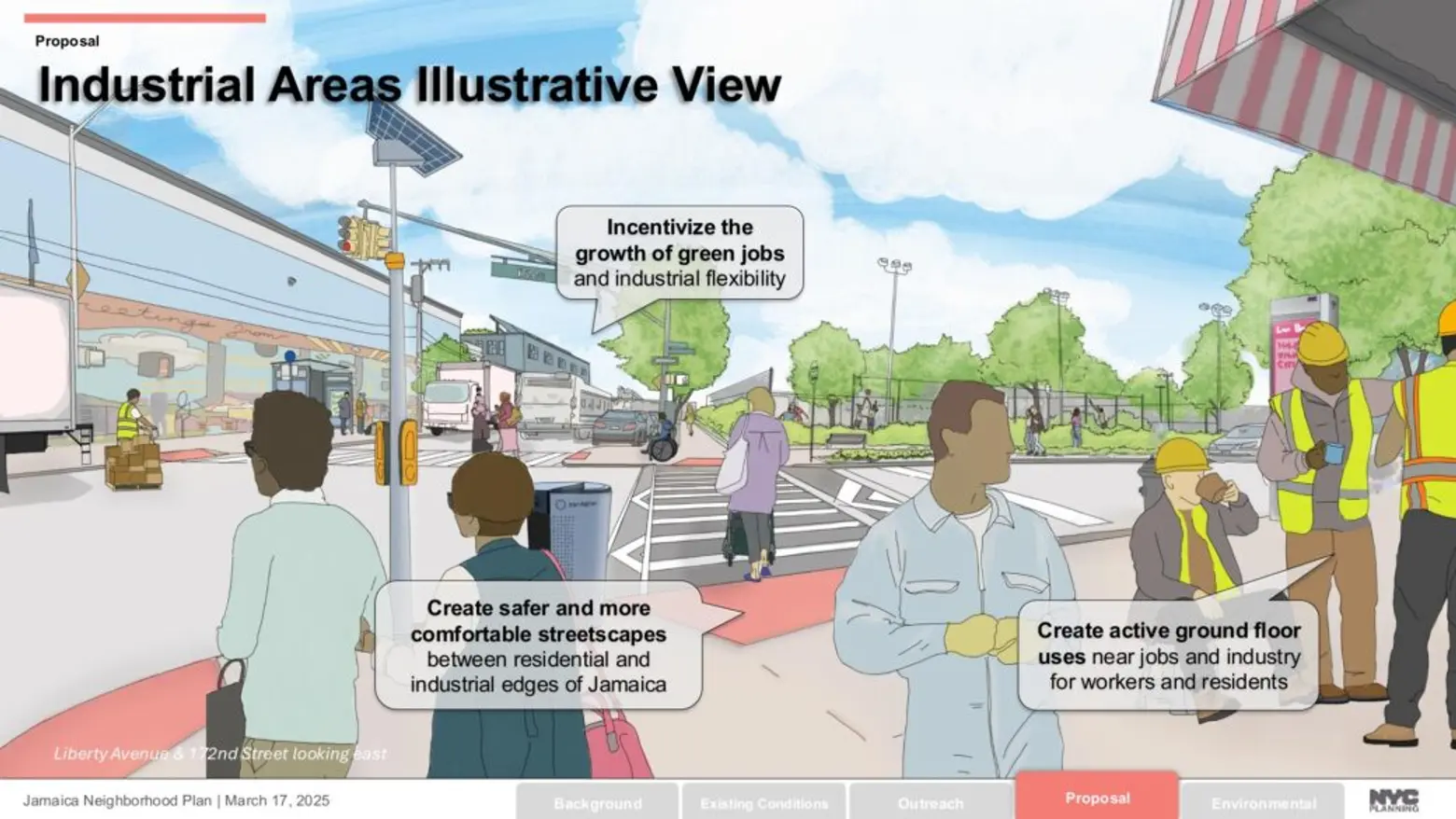
Finally, the Industrial Areas in the eastern part of the study area would be rezoned to support and preserve the neighborhood’s existing industrial businesses, largely retaining its industrial character.
The rezoning also includes streetscape enhancements along Jamaica Avenue from the city’s Department of Transportation through Jamaica NOW.
The Jamaica Neighborhood Plan was shaped through a two-year public engagement process, featuring 40 in-person and virtual meetings attended by hundreds of New Yorkers and generating roughly 3,000 comments. The process was guided by a committee consisting of over 50 neighborhood stakeholders, including elected officials, Queens Community Board 12, and numerous local advocacy groups.
DCP also collaborated with the Massachusetts Institute of Technology on Voice to Vision, an online tool that illustrates how community feedback has shaped the plan’s vision and goals.
Now certified, the plan will enter the seven-month Uniform Land Use Review Procedure, undergoing reviews by Community Boards 8 and 12 and Queens Borough President Donovan Richards, before advancing to hearings and binding votes at the City Planning Commission and City Council.
It will also require support from local councilmembers Nantasha Williams and James Gennaro, as well as City Council Speaker Adrienne Adams, all of whose districts will be impacted by the rezoning, as reported by The Real Deal.
Following certification, DCP released the Jamaica Neighborhood Plan booklet, providing detailed insights into the proposal and the planning process.
“A home is more than just four walls and a roof — it’s the foundation needed to achieve the American Dream and thrive in the greatest city on the globe. For the residents of Jamaica, we’re one step closer to making that dream a reality for generations to come,“ Mayor Adams said.
“Jamaica is on the precipice of becoming a neighborhood of the future with good-paying jobs, affordable homes, and public spaces for families to enjoy. I applaud all the elected officials, community stakeholders, and everyday New Yorkers who made their voices heard to tailor this plan towards this community’s need. Jamaica’s best days still lie ahead and, together, we’ll build towards a better tomorrow.”
The Jamaica rezoning joins several other rezonings initiated by the Adams administration in recent years. In August, the City Council approved the Bronx Metro-North Station Area Plan, which will rezone 46 blocks around four new Metro-North stations planned for Co-op City, Hunts Point, Morris Park, and Parkchester/Van Nest. The plan is poised to bring thousands of new homes, jobs, and public realm investments to the borough.
In January, the public review process began for the Midtown South Mixed-Use plan, which proposes rezoning 42 blocks of the neighborhood to allow the construction of roughly 9,700 new homes in areas where housing has been prohibited by outdated zoning regulations.
And on Wednesday, the City Planning Commission approved the Atlantic Avenue Mixed-Use Plan, a rezoning initiative that could bring 4,600 new homes—1,440 of which would be permanently affordable—along with 2,800 permanent jobs and public realm upgrades to a 21-block stretch of Atlantic Avenue.
RELATED:
